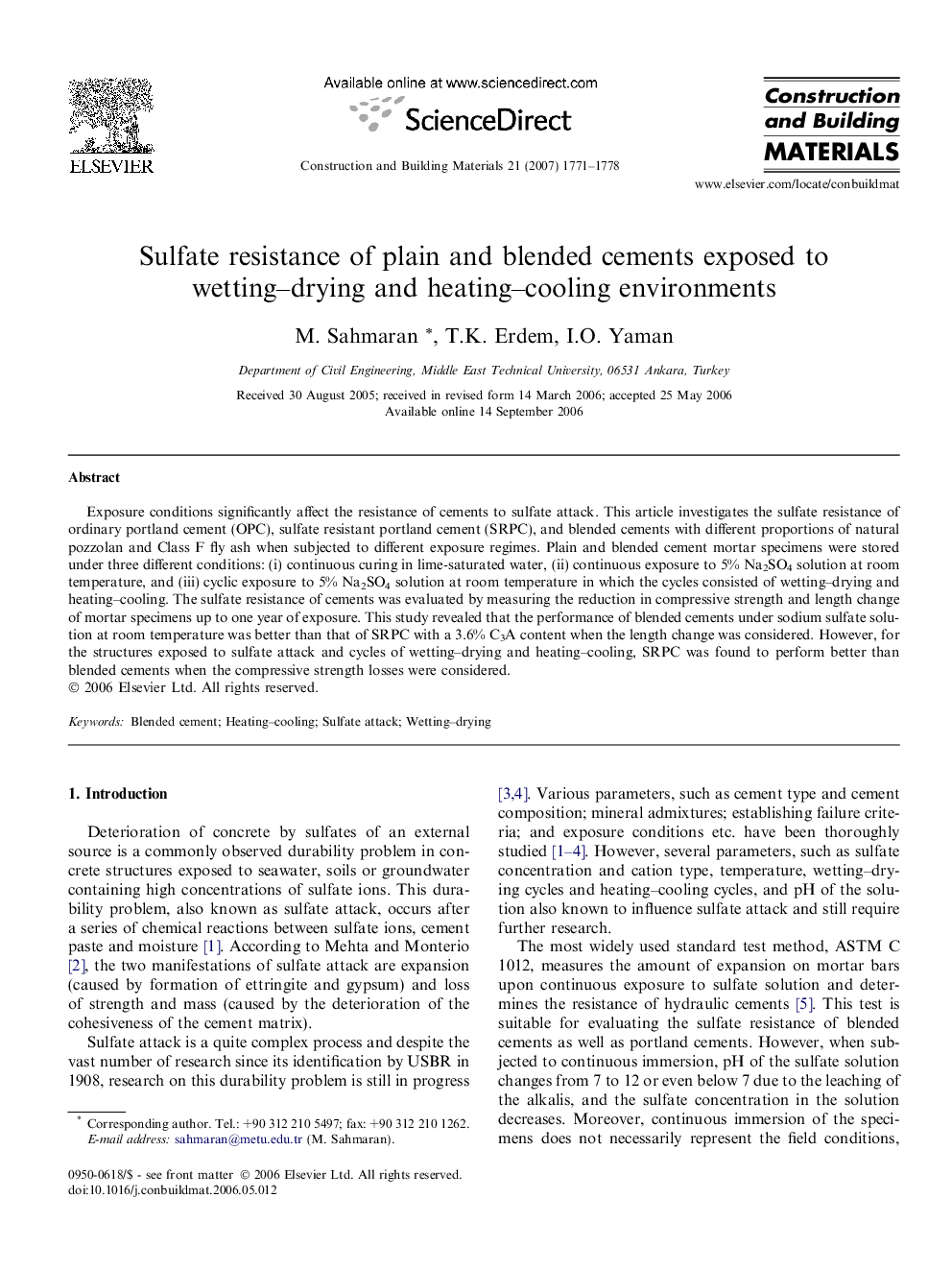| Article ID | Journal | Published Year | Pages | File Type |
|---|---|---|---|---|
| 261326 | Construction and Building Materials | 2007 | 8 Pages |
Exposure conditions significantly affect the resistance of cements to sulfate attack. This article investigates the sulfate resistance of ordinary portland cement (OPC), sulfate resistant portland cement (SRPC), and blended cements with different proportions of natural pozzolan and Class F fly ash when subjected to different exposure regimes. Plain and blended cement mortar specimens were stored under three different conditions: (i) continuous curing in lime-saturated water, (ii) continuous exposure to 5% Na2SO4 solution at room temperature, and (iii) cyclic exposure to 5% Na2SO4 solution at room temperature in which the cycles consisted of wetting–drying and heating–cooling. The sulfate resistance of cements was evaluated by measuring the reduction in compressive strength and length change of mortar specimens up to one year of exposure. This study revealed that the performance of blended cements under sodium sulfate solution at room temperature was better than that of SRPC with a 3.6% C3A content when the length change was considered. However, for the structures exposed to sulfate attack and cycles of wetting–drying and heating–cooling, SRPC was found to perform better than blended cements when the compressive strength losses were considered.
